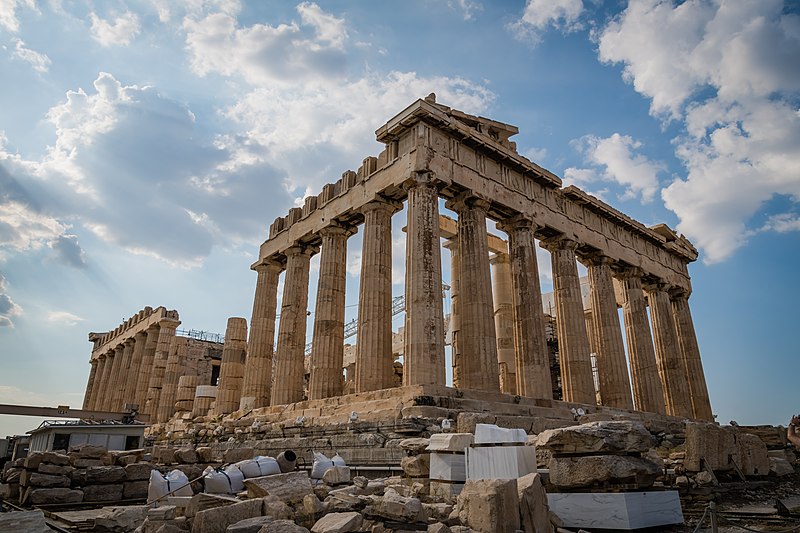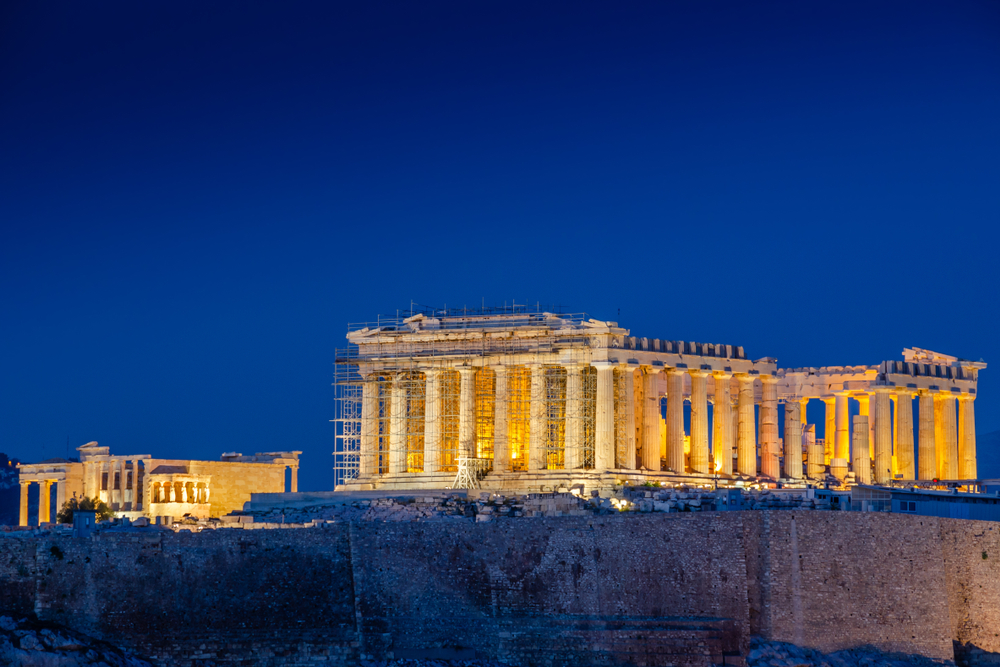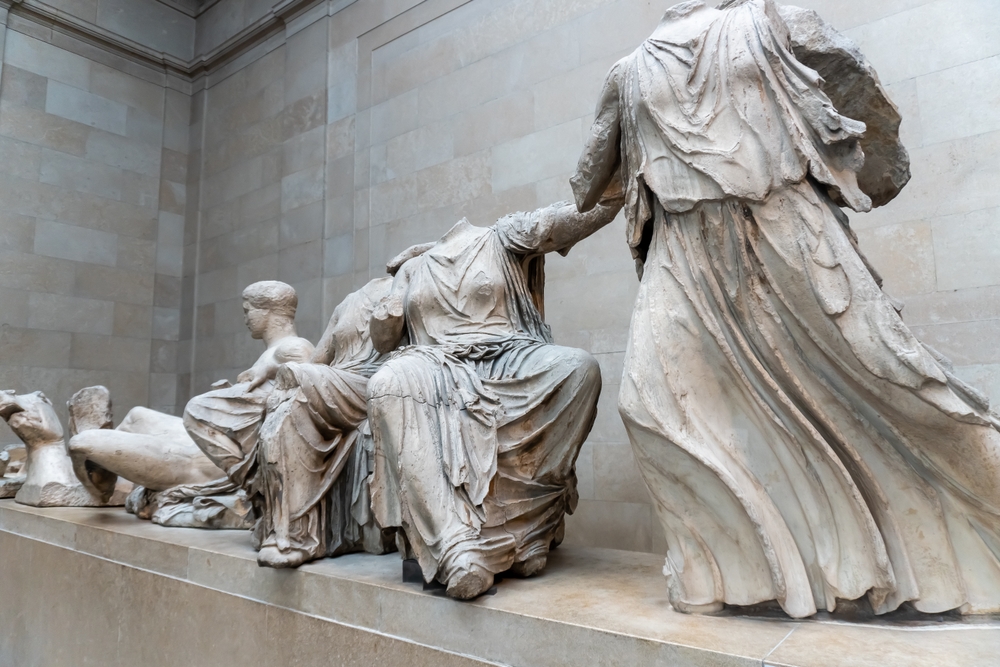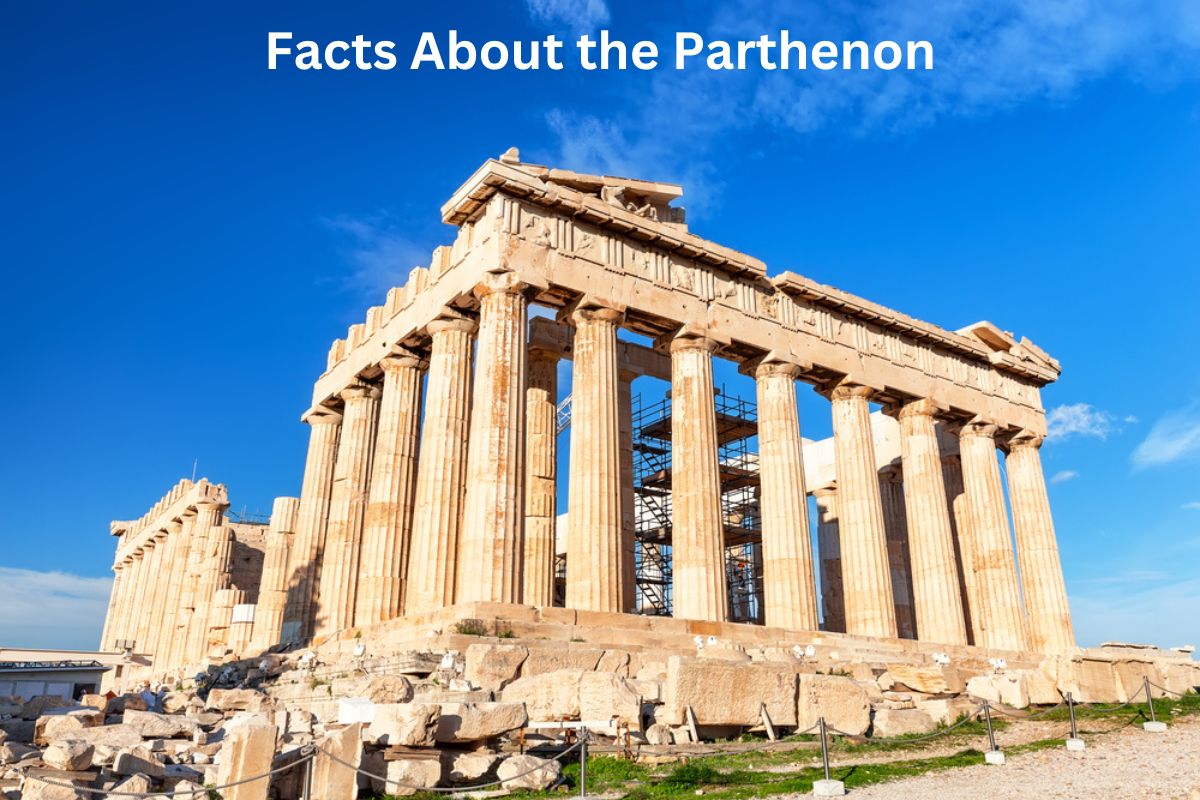The Parthenon is an ancient Greek temple located on the Acropolis in Athens, Greece. Built between 447 and 438 BCE, it is dedicated to the goddess Athena and stands as a symbol of Athens’ cultural and political power.
Designed by architects Ictinus and Callicrates, the temple showcases the Doric order of architecture with its sturdy columns and simple yet elegant design.
The Parthenon’s historical significance, elaborate sculptural decorations, including the famous Panathenaic frieze, and its transformations into a church and later a mosque, contribute to its global recognition.
As a UNESCO World Heritage site, the Parthenon remains an iconic landmark and a testament to ancient Greek civilization and architectural brilliance.
The Parthenon Facts
1. Built between 447 and 438 BCE in Athens, Greece
The construction of the Parthenon took place during the Golden Age of Athens, a period of cultural and intellectual flourishing.
Also Read: Facts About the Acropolis
It was commissioned by Pericles, the influential Athenian statesman, as part of a larger building project to showcase the power and prestige of Athens.

2. Dedicated to the goddess Athena
The Parthenon was specifically dedicated to Athena Parthenos, the virgin goddess of wisdom, courage, and strategic warfare. Athena was highly revered in Athens, and the temple served as a focal point for religious worship and civic ceremonies associated with the goddess.
3. Designed by architects Ictinus and Callicrates
Ictinus and Callicrates were two prominent architects of ancient Greece who collaborated on the design and construction of the Parthenon. They were chosen for their expertise in creating grand and harmonious structures.
Also Read: Ancient Athens Facts
Together with the sculptor Phidias, they worked closely to ensure the temple’s architectural integrity and its integration with the sculptural decoration. The architects employed precise mathematical proportions and careful attention to detail to achieve aesthetic perfection in the temple’s design.
4. Constructed in the Doric order of architecture
The Parthenon is a prime example of Doric architecture, one of the three classical orders of ancient Greek architecture. The Doric style is characterized by its simplicity, solidity, and robustness.
The temple has a rectangular floor plan with a series of columns supporting the entablature. The columns are fluted, with no bases, and have a simple capital consisting of a rounded echinus and an abacus.
5. Originally housed a colossal statue of Athena Parthenos
Inside the Parthenon, there was once an enormous statue of Athena Parthenos, created by the renowned sculptor Phidias. The statue was made of gold and ivory and stood approximately 12 meters (39 feet) tall.
It depicted Athena in her full armor, holding a Nike (victory) in one hand and a spear in the other. The statue was a masterpiece of ancient Greek sculpture and served as the focal point of religious worship within the temple.

6. Elaborate sculptural decorations depict the Panathenaic procession
The Parthenon is adorned with a rich array of sculptural decorations. The most famous among them is the frieze that encircles the exterior of the cella, the inner chamber of the temple.
The frieze is a continuous band of relief sculptures depicting the Panathenaic procession, a grand event held in Athens every four years to honor Athena.
It portrays various figures, including gods, humans, and mythical creatures, participating in the procession, conveying a sense of movement, dynamism, and cultural significance.
The frieze of the Parthenon is renowned for its exquisite craftsmanship and its depiction of classical Greek life and mythology.
7. Converted into a church and later a mosque
Over the centuries, the religious significance of the Parthenon shifted with changing rulers and cultural influences. In the 5th century CE, following the decline of ancient Greece, the Parthenon was transformed into a Christian church, dedicated to the Virgin Mary.
During the Ottoman period in the 15th century, it was converted into a mosque and underwent alterations, including the addition of a minaret and the covering of some of the sculptural decorations.
8. Some sculptures, known as the Elgin Marbles, were removed by Lord Elgin and are now in the British Museum
In the early 19th century, Lord Elgin, a British ambassador to the Ottoman Empire, obtained permission to remove several sculptures and friezes from the Parthenon.
These sculptures, collectively known as the Elgin Marbles or the Parthenon Marbles, include a significant portion of the frieze, metopes, and pedimental sculptures.
They were later sold to the British Museum in London, where they remain a subject of ongoing debate and dispute between Greece and the United Kingdom.

9. Underwent restoration work in the 20th century
The Parthenon suffered damage over the centuries due to wars, explosions, weathering, and previous restoration attempts. In the 20th century, extensive restoration work was carried out to stabilize and preserve the structure.
The restoration efforts aimed to repair structural issues, replace damaged or missing elements, and protect the temple from further deterioration. The project involved careful research, use of compatible materials, and a commitment to maintaining the historical integrity of the monument.
10. A UNESCO World Heritage site and a symbol of ancient Greek civilization
The Parthenon is recognized as a UNESCO World Heritage site, highlighting its universal cultural value and significance. It stands as an enduring symbol of ancient Greek civilization, democracy, and architectural excellence.
The temple’s harmonious proportions, intricate sculptural decorations, and historical importance make it one of the most iconic and celebrated landmarks in the world. Today, the Parthenon continues to attract millions of visitors who marvel at its grandeur and appreciate its historical and cultural significance.
